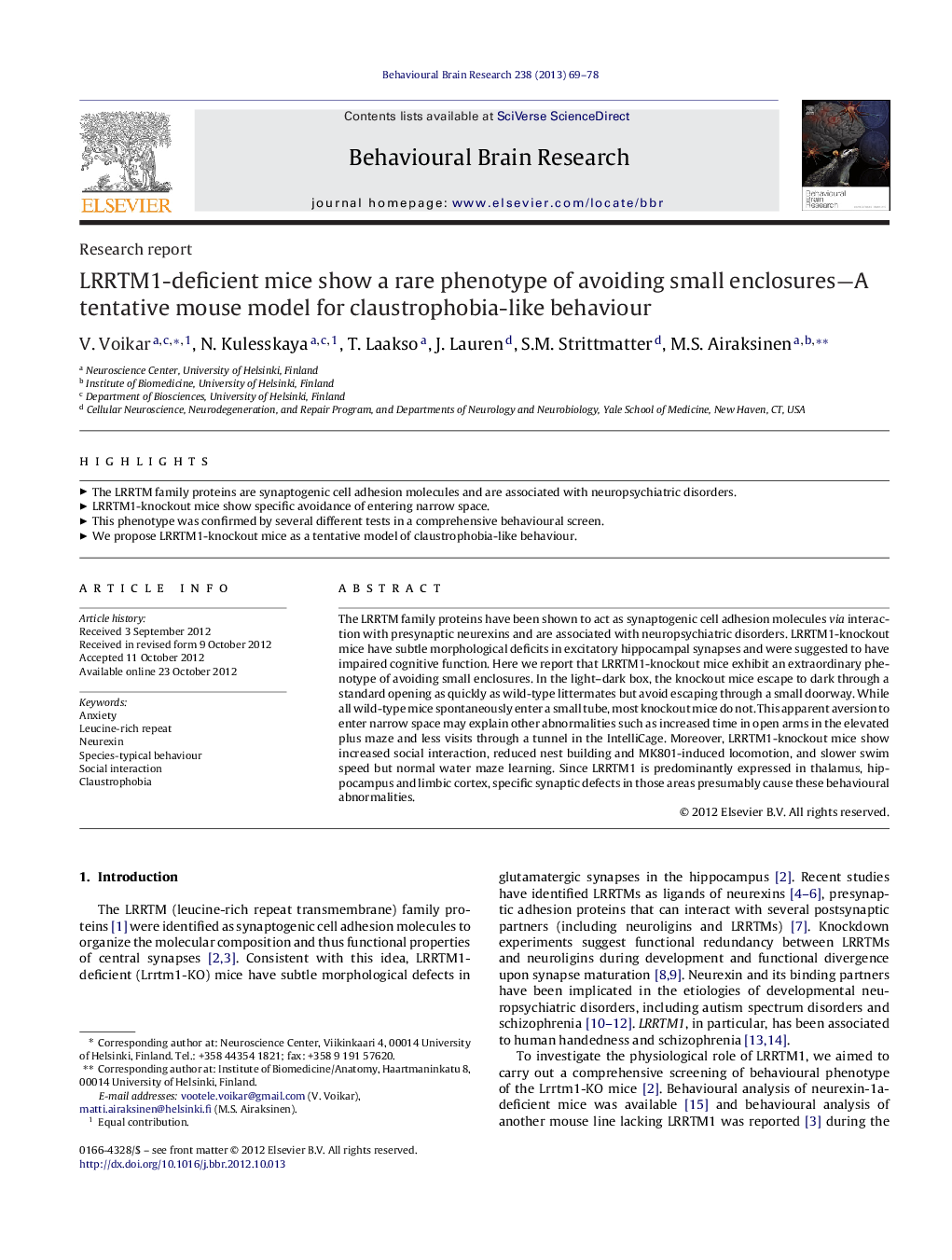| Article ID | Journal | Published Year | Pages | File Type |
|---|---|---|---|---|
| 4312910 | Behavioural Brain Research | 2013 | 10 Pages |
The LRRTM family proteins have been shown to act as synaptogenic cell adhesion molecules via interaction with presynaptic neurexins and are associated with neuropsychiatric disorders. LRRTM1-knockout mice have subtle morphological deficits in excitatory hippocampal synapses and were suggested to have impaired cognitive function. Here we report that LRRTM1-knockout mice exhibit an extraordinary phenotype of avoiding small enclosures. In the light–dark box, the knockout mice escape to dark through a standard opening as quickly as wild-type littermates but avoid escaping through a small doorway. While all wild-type mice spontaneously enter a small tube, most knockout mice do not. This apparent aversion to enter narrow space may explain other abnormalities such as increased time in open arms in the elevated plus maze and less visits through a tunnel in the IntelliCage. Moreover, LRRTM1-knockout mice show increased social interaction, reduced nest building and MK801-induced locomotion, and slower swim speed but normal water maze learning. Since LRRTM1 is predominantly expressed in thalamus, hippocampus and limbic cortex, specific synaptic defects in those areas presumably cause these behavioural abnormalities.
► The LRRTM family proteins are synaptogenic cell adhesion molecules and are associated with neuropsychiatric disorders. ► LRRTM1-knockout mice show specific avoidance of entering narrow space. ► This phenotype was confirmed by several different tests in a comprehensive behavioural screen. ► We propose LRRTM1-knockout mice as a tentative model of claustrophobia-like behaviour.
